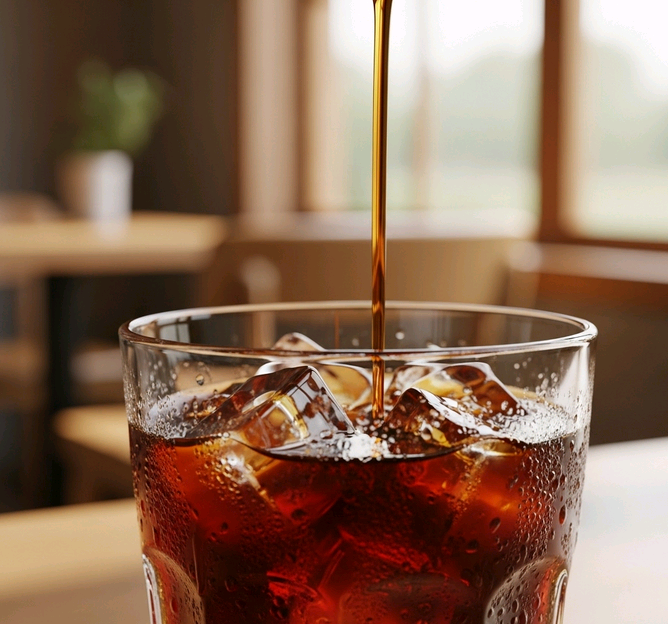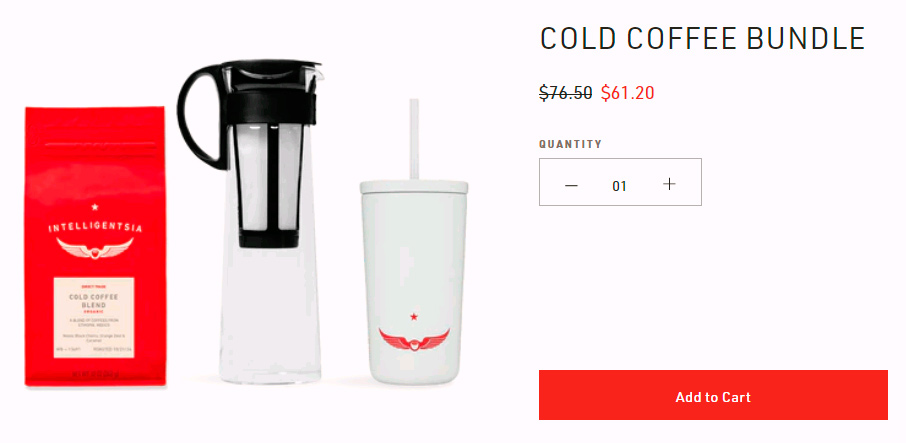Cold Brew Grind Size: The Key to Silky Smoothness & Perfect Flavor

Learning the Grind for Flawless Cold Brew Concentrate is the Key to Silky Smoothness.
Cold brew has become a favorite standard in the coffee industry beyond trendiness. Its distinctive smoothness, low acidity, and adaptable character make it a wonderful foundation for everything from strong shots to cold lattes. But should your homemade cold brew ever taste unexpectedly bitter, sour, or exceedingly gritty, the culprit is virtually certainly hiding in plain sight: your coffee grind size.
Having poured myself into unleashing coffee’s whole potential, I can attest that for cold brew grind uniformity is essential—it is of utmost importance. Unlike hot brewing techniques that depend on high temperatures for fast extraction, cold brew is a game of patience and precision where time, not heat, entices out the tastes. Unlocking cold brew nirvana depends on grasping this basic distinction.
The Complete Guide to Choosing Coffee Grounds for Perfect Cold Brew
Coarse is King For Cold Brew: Golden Rule
Let’s get right to it: cold brew lovers and specialists alike mostly agree that a rough to extra-coarse grind should be your non-negotiable beginning. Disregard the slightly less fine consistency for drip coffee or the fine powder of espresso. For cold brew, you’re after something considerably bigger.
Visually consider it like breadcrumbs, coarse sea salt, or even minute pieces of gravel or cornmeal. Should you pinch it between your fingers, it should have a decidedly gritty rather than powdery or silky feeling. Many cold brew fans even advocate going a grind setting or two coarser than what you’d use for a French press. Fundamental to the cold brew method is this bigger particle size.
Looking for the ideal coffee beans for cold brew that perfectly match our recommendations?
Check out the Intelligentsia Cold Coffee Blend. This blend was crafted by Intelligentsia experts specifically for cold brewing, delivering that very low acidity, silky texture, and rich flavor we’ve discussed. It’s perfectly suited for enjoying a refreshing and incredibly smooth beverage, free from bitterness or harshness.
Why Rough? The Scientific Rationale Behind the Smooth.
There is sound scientific basis behind the harsh grind preference; this is not just random advice:
- Prevents Over-extraction: Cold water is a less harsh solvent than hot water. This means extraction often takes 12–24 hours. If you use a fine grind, the great surface area of the little particles lets compounds extract too quickly, even in cold water. Unrestrained, quick extraction leads directly to the unpleasant flavors of bitterness and astringency, and sometimes even a sour note. A gritty grind slows this process and allows for more balanced and forgiving extraction over time.
- Reduces Sediment and Sludge: One of the most frequent gripes about homemade cold brew is a gritty or muddy texture. This usually results from too many fines—small, powdery coffee particles. A coarser, more consistent grind greatly lowers the creation of these fines, therefore producing a substantially cleaner, smoother, and less murky concentrate. You want coffee, not coffee sludge.
- Aids Filtration: Large, coarse particles are inherently easier to remove; hence, it helps filtration. Coarser grounds translate to less clogging and a clearer, more vivid ultimate concentrate whether you are using a French press, a fine-mesh sieve, cheesecloth, or a devoted cold brew system. Fine grinds may swiftly drown your filters, hence making the process annoying and messy.
The Grind Consistency Imperative: Why Your Grinder Matters
Your choice of grinder becomes especially important given grind size’s vital importance.
Without question, your best buddy for cold brew is a burr grinder (either conical or flat burr). These grinders crush beans between two abrasive surfaces to yield uniform, consistent particle size. This uniformity is essential for even extraction across all particles as well as, very importantly, for reducing the generation of unwanted fines. The single most effective improvement you could make for your cold brew setup is probably investing in a superior burr grinder.
The Enemy of Consistency: Should you be employing a blade grinder right now, be aware of this: it’s not exactly grinding your coffee. It is chopping and smashing the beans with rotating blades, creating a very uneven blend of fine powder and big chunks. This approach also produces heat, which could degrade nuanced coffee aromas too soon. Though employing short pulses—the pulse approach—can somewhat lessen the problem of too many fines, a blade grinder will never get the consistency required for really amazing cold brew. Should it be your only choice, use it judiciously and acknowledge that your cold brew might still have some mud.
Visual and Tactile Guide for Spot Checking Your Grind
Confirm its consistency before you send your freshly ground coffee to its cold bath:
- Visual: Pour a little amount into your palm. Do the particles look like coarse sea salt, breadcrumbs, or little gravel? Is it mainly even chunks or are there many fine, powdered particles?
- Tactile: Gently pinch a pinch between your forefinger and thumb. It should not feel smooth or dusty; rather, it should seem very rough and abrasive. Too fine if it feels like silt or flour.
Solving Frequently Occurred Common Grind Related Problems
Your grind is the first point to investigate if your cold brew isn’t exactly what you expect.
- Bitter, bitter, or sour coffee: This traditional indicator of over-extraction, almost certainly caused by a grind that is too fine. Too much too fast was taken from the too-small particles. Set your grinder coarser.
- Coffee that is murky, slimy, or hard-to-filter: This cries too many fines! Your concentrate will get murky and clog filters if you have a lot of powdery residue even if your main grind seems rough. Make sure your burr grinder is set to its coarsest or close-to-coarsest level. Though this is a further step for perfectionists, some committed cold brew fans even go so far as to sift their just-ground coffee to eliminate fines.
- Weak or under-extracted coffee (less common): Although over-extraction is more usual, it could be your grind is too coarse, your coffee-to-water ratio is incorrect, or the brew time was insufficient if your cold brew tastes watery or has little depth.
Ready to start brewing your perfect cold brew?
Don’t just pick beans—choose a complete solution for flawless results!
To ensure you have everything you need for ideal cold brewing, consider the Intelligentsia Cold Coffee Bundle. It includes specially selected beans and the essential tools to create that smooth, rich, and refreshing cold brew we’ve talked about in detail. It’s the perfect way to begin or significantly enhance your home brewing experience.
The Final Word: Experiment in the Coarse World
Deeply satisfying is the path to great cold brew concentrate. Investing in the correct tools and grasping the essential part of a coarse, consistent grind will open a world of smooth, delicious coffee that towers head and shoulders above its less refined rivals.
Set your burr grinder to its roughest setting, then welcome the patience cold brewing calls for and get ready to savor a really excellent cup. Happy brewing!
FAQs
What is the best grind for cold brew concentrate?
Best is coarse to extra-coarse, the consistency of coarse sea salt or breadcrumbs. This prevents over-extraction and minimizes sediment.
Is grind uniformity important when making cold brew?
Yes, grind consistency matters. A consistent coarse grind delivers consistent extraction and reduces undesirable bitterness, sourness, and sediment in the final concentrate by a significant amount.
What is the best ratio for cold brew concentrate?
One popular and well-recommended cold brew concentrate ratio is 1:4 (1 part coffee to 4 parts coffee grounds) to 4 parts water by weight. Some prefer a more concentrated 1:3 ratio and others prefer a more diluted 1:5 ratio.
Which coffee blend is best suited for cold brew?
Although personal taste varies, cold brew is best suited with medium to dark roasts. These give a smoother, richer flavor and less acidity. Single-origin coffees or chocolatey, nutty, or low-acid blend coffees also work fine.
How to make the strongest cold brew concentrate?
In order to make the strongest cold brew concentrate:
- Use a greater coffee-to-water ratio (e.g., 1:3 or even 1:2.5).
- Use a coarse grind to avoid over-extraction and bitterness.
- Steep for a long time (up to 24 hours, but don’t over-steep if bitterness is produced).
- Use fresh, good quality coffee beans.
How to make bulk cold brew?
To make bulk cold brew:
- Use a large, non-reactive container (such as a large pitcher, stock pot, or dedicated cold brew maker).
- Keep the ideal coffee-to-water ratio (e.g., 1:4), increasing ingredients proportionally.
- Use a coarse grind for the big batch.
- Mix coffee grounds and filtered water, making sure to saturate all grounds.
- Steep at room temperature or in the fridge for 12-24 hours.
- Strain slowly through cheesecloth, a fine-mesh strainer, or a cold brew filter.
Why is my cold brew light?
Your cold brew may be light due to:
- Too low coffee-to-water ratio (not enough coffee).
- Too brief a steep time (under-extraction).
- Too coarse a grind (if combined with insufficient steep time).
- Using a light-roasted coffee that inherently has a lighter body.
- Lack of good ground saturation during brewing.
Who makes the best cold brew?
“Best” is subjective. Well-known corporate cold brew brands most often cited for quality are Stumptown, La Colombe, Chameleon Cold-Brew, and Califia Farms. Local artisitic coffee shops in most regions are also good at cold brew.
What’s the perfect coffee grind size?
The “perfect” coffee grind size varies wildly depending on brewing method:
- Extra-coarse: Cold brew
- Coarse: French Press, percolators
- Medium-coarse: Chemex, Clever Dripper
- Medium: Drip coffee makers, Aeropress (longer brew)
- Medium-fine: Pour-over (e.g., V60), Aeropress (shorter brew)
- Fine: Espresso
- Extra-fine/Turkish: Turkish coffee
Is cold brew concentrate more potent?
Yes, cold brew concentrate is significantly more potent than regular brewed coffee. It’s meant to be diluted with water, milk, or ice to consume. Its higher concentration means more caffeine per ounce.
What grind is cold brew at Starbucks?
Starbucks grinds to a coarse grind in their in-cafe cold brew. Their grind is similar to coarse cornmeal or coarse sea salt.
How long should cold brew concentrate steep?
Cold brew concentrate typically steeps from 12 to 24 hours. The peak time is dependent on preferred strength and flavor profile, with longer steeping resulting in a more concentrated one, though beyond 24 hours sometimes creates unpleasant flavors.

